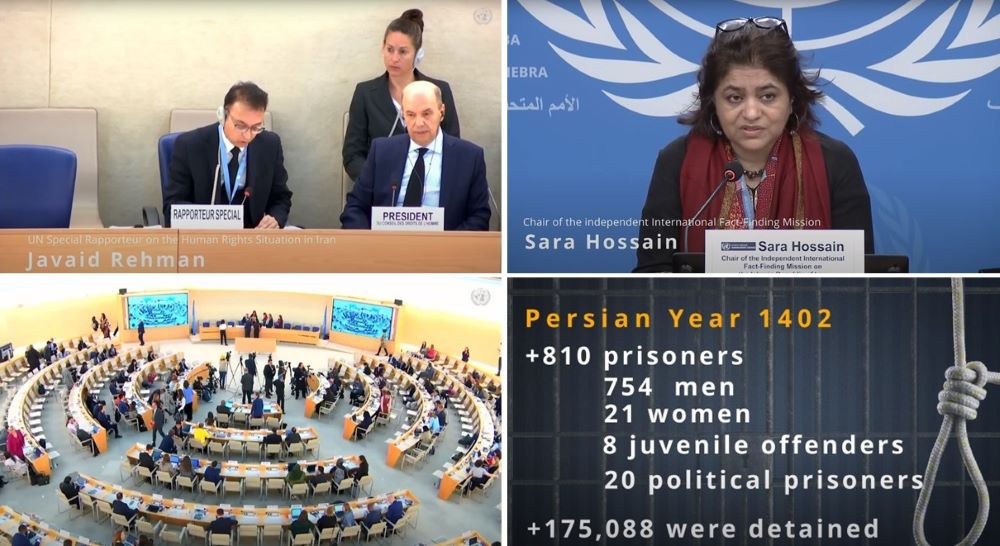
As Iran marks the beginning of the Persian year 1403 (March 20, 2024 – March 20, 2025), it remains evident that human rights issues have been one of the most serious challenges facing the mullahs’ regime.
In 1402, Iran witnessed unrestrained suppression. At least 810 prisoners were executed according to published information, although the actual numbers are likely higher. Among these, 754 were men, 21 women, eight juvenile offenders, and 20 political prisoners, including public executions.
Notably, a significant number of the executed prisoners were Baluch and Kurd, highlighting the regime’s expansive suppression of Iran’s minority ethnicities.
Moreover, at least 175,088 individuals were detained, with political arrests, arbitrary detentions, and social arrests making up the bulk.
The continuous violation of human rights has further tarnished the image of the regime internationally.
In his remarks on March 18, 2024, the UN Special Rapporteur on the Human Rights Situation in Iran, Javaid Rehman, described the situation of human rights in Iran during the 55th United Nations Human Right Council.
The UN Fact-Finding Mission on Iran, also shed light on the gross violation of human rights during the 2022 nationwide uprising.
These reports underscore the regime’s widespread use of execution, arbitrary detention, and torture as means to suppress legitimate public demonstrations and demands for accountability.
Two key factors have prevented the regime from concealing its crimes despite its efforts and the West’s policy of appeasement.
First is the presence of a nationwide resistance and a democratic alternative that has been active in exposing the regime’s actions on the international stage
The second factor is the role of citizens and the use of mass media and social networks, which have helped to bring the regime’s atrocities to light.
Despite increasing suppression, executions, and torture, the regime has only added to the public’s anger and dissatisfaction. The illegitimacy of the regime was further highlighted in the sham parliamentary elections, which were massively boycotted.
Last year according to the Persian calendar, the Iranian society staged a total of 3,363 protests, averaging nine protests a day. This reflects a society that is seething with anger and eager to free itself from the clutches of a bloodthirsty dictatorship.
The persistent defiance and protest movements across the country underscore the inevitability of the regime’s downfall, driven by a society yearning for freedom and justice.